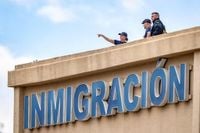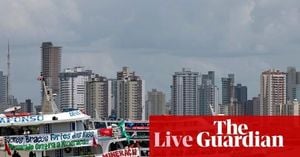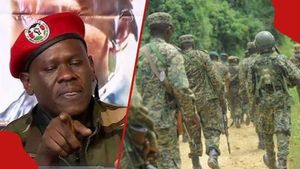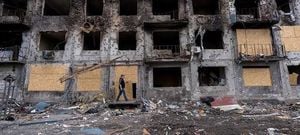On the morning of September 24, 2025, tragedy struck the Dallas Immigration and Customs Enforcement (ICE) facility when a gunman opened fire, killing one detained migrant and injuring two others. The shooter, identified as 29-year-old Joshua Jahn, died at the scene from a self-inflicted gunshot wound, according to statements from law enforcement officials reported by USA TODAY and EL PAÍS. As details have emerged, the incident has become a flashpoint in a national debate over political violence, immigration enforcement, and the rhetoric surrounding both.
In the immediate aftermath, President Donald Trump wasted no time in assigning blame. Speaking from the Oval Office on September 25, he pointed to what he called the “Radical Left Democrats constantly demonizing Law Enforcement, calling for ICE to be demolished, and comparing ICE Officers to ‘Nazis.’” On his Truth Social platform, Trump wrote, “The Brave Men and Women of ICE are just trying to do their jobs, and remove the ‘WORST of the WORST’ Criminals out of our Country, but they are facing an unprecedented increase in threats, violence, and attacks by Deranged Radical Leftists.” He warned ominously, “It’s going to get worse and ultimately it’s going to go back on them. Bad things happen when they play these games... It will be a point where other people won’t take it anymore. And that will not be good for the radical left.” (USA TODAY, EL PAÍS).
Vice President JD Vance echoed this sentiment at a rally in North Carolina, arguing, “Stopping political violence starts, unfortunately, at the very top of the Democratic Party,” and suggesting that left-leaning rhetoric was fueling attacks on law enforcement.
Yet, the facts of the Dallas shooting complicate the narrative. According to the FBI and Department of Homeland Security, Jahn’s writings revealed he “targeted ICE agents and ICE personnel” and “hoped to minimize any collateral damage or injury to the detainees,” as reported by Nancy Larson, acting U.S. attorney for the Northern District of Texas. FBI Director Kash Patel posted a photo of bullets recovered at the scene, with “ANTI-ICE” inscribed on them in blue ink. Patel also shared a note from Jahn that read, “Hopefully this will give ICE agents real terror, to think, ‘is there a sniper with AP rounds on that roof?’” (USA TODAY, AllSides).
Despite Jahn’s stated intent, it was the detainees—migrants being held at the facility—who became the victims. Authorities confirmed that all three people shot were detainees, and no ICE officers were injured in the attack (AllSides, EL PAÍS). Two of the wounded remain in critical condition. As of publication, officials have not released the identities of the victims.
The attack came against a backdrop of rising tensions and violence directed at immigration authorities. Department of Homeland Security Assistant Secretary Tricia McLaughlin told EL PAÍS and USA TODAY that ICE agents have faced a “more than 1000% increase in assaults” between January 21 and June 30, 2025, compared to the same period in 2024. McLaughlin warned, “This demonization is inspiring violence across the country. Our ICE officers are facing a more than 1000% increase in assaults against them. We have to turn down the temperature before someone else is killed. This violence must end.”
Federal data shows that there were 79 attacks on ICE agents in the first half of 2025, compared to just 10 during the same period the previous year. The majority of these incidents involved verbal threats or altercations during arrests, but several have been more severe. On July 4, 2025, a group of about 12 people attacked agents at the Prairieland Detention Center in Alvarado, Texas, setting off fireworks, vandalizing vehicles with anti-ICE slogans, and shooting at agents, wounding one. Ten people were arrested and charged with attempted murder of a federal agent. Three days later, a man fired dozens of shots at Border Patrol agents in McAllen, Texas, wounding one officer before being killed by authorities (EL PAÍS).
The Dallas facility itself had faced a bomb threat just a month prior, though officials have not confirmed any link between that incident and Jahn’s attack (AllSides). Investigators also discovered that Jahn had been using mobile apps to track the presence of ICE personnel, raising concerns about the safety of officers and the sophistication of those targeting them.
Media coverage of the Dallas shooting quickly split along familiar lines. Fox News, as noted by AllSides, described the event as a “targeted attack” against ICE, highlighting statements from FBI Director Patel and Homeland Security Secretary Kristi Noem. NBC News, meanwhile, reported on Jahn’s prior criminal record—a 2016 felony charge for marijuana delivery—and noted he was a registered independent who last voted in November 2024. BBC offered context by referencing recent incidents of political violence, including the high-profile shooting of conservative activist Charlie Kirk in Utah, and called for Americans to come together in the face of such tragedies.
But the controversy surrounding ICE extends beyond attacks against its agents. Civil rights advocates and immigrant communities have long criticized the agency for its tactics, alleging brutality and excessive force. Videos and testimonies published by EL PAÍS and others document raids in Latino neighborhoods, workplaces, and even near schools, often involving broken windows, physical violence, and family separations. At least 17 people have died this year in ICE-operated detention centers. The fear and resentment these tactics have sown have led some to compare ICE to the Nazi Gestapo, a charge that has only fueled the political firestorm.
Efforts to protect ICE agents have also become a flashpoint. In September, California Governor Gavin Newsom signed an executive order requiring law enforcement officers to show their faces and banning the use of masks—a move aimed at increasing transparency and accountability. The Department of Homeland Security, however, refused to comply, calling the order “unconstitutional” and vowing to continue using masks to protect agents from attacks (EL PAÍS).
Meanwhile, the national conversation about political violence remains fraught. While Trump and his allies have been quick to blame left-wing rhetoric for attacks like the Dallas shooting, critics point out that political violence is not confined to one side of the spectrum. A Cato Institute analysis found that between January 1, 1975, and September 10, 2025, 3,597 people were killed in politically motivated attacks in the U.S., with the political right responsible for about 61% of deaths (excluding the September 11 attacks). Recent high-profile incidents—including the assassination of Minnesota State Rep. Melissa Hortman and her husband, the home attack on Paul Pelosi, and the January 6, 2021 Capitol riot—underscore the complexity and danger of America’s polarized climate (USA TODAY).
As the investigation into the Dallas shooting continues, the nation is left to grapple with difficult questions about the causes of political violence, the responsibilities of leaders and the media, and the human cost of an immigration system under siege from all sides. For the families of the victims and the communities affected, the wounds—both physical and emotional—will not soon heal.





